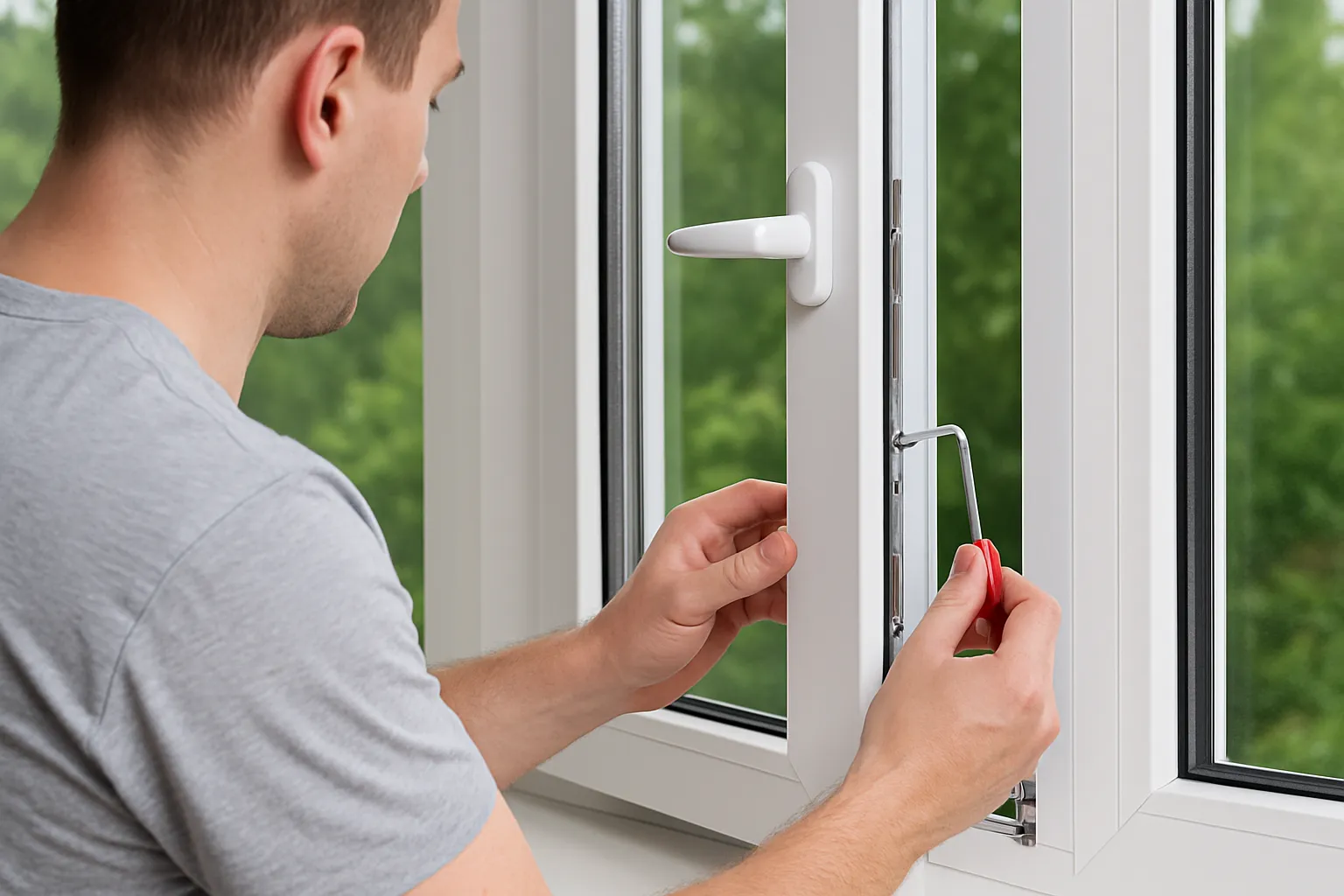
How to Adjust Your PVC Window Like a Pro
PVC windows are praised for their durability, thermal insulation, and easy maintenance. But even the best windows need occasional tuning to keep them airtight and smooth to operate — especially when seasons change.
In this guide, we’ll show you how to adjust your uPVC windows step-by-step, explain which tools you’ll need, and share some pro-level tips to make the job effortless.
🔧 Why Adjust uPVC Windows?
- Seasonal changes: PVC expands in summer and contracts in winter, affecting frame tension and insulation.
- Gravity & wear: Over time, the sash may sag or drift, making it harder to close or causing gaps.
- Better energy performance: Tighter seals = less heat loss = lower bills.
If your windows feel loose, difficult to open, or drafty, a 5-minute adjustment might solve the problem.
🧰 Tools You’ll Need
- 4 mm Allen key (hex key)
- T15 Torx screwdriver
- Flat-head screwdriver
- Silicone spray (not WD‑40!)
🧼 Also keep a cloth and mild soap nearby for cleaning frames and hinges before adjusting.
📏 How to Adjust uPVC Windows – Step by Step
1. 🔄 Adjust Horizontal Compression
Used when the window feels drafty or doesn’t press firmly against the seal.
- Open the sash fully (90°).
- Remove the hinge cap to access adjustment screw.
- Use the 4 mm Allen key:
- Clockwise = tighter seal
- Counterclockwise = looser seal
🔗 Learn more about warm installation of energy-efficient windows and why compression matters.
2. ↕ Adjust Vertical Alignment
Useful if the sash is rubbing or catching at the bottom.
- Use a T15 Torx screwdriver on the top hinge.
- Turn slowly and check alignment after each turn.
- Repeat on both hinges for balance.
3. 🎛️ Adjust Tilt Function (Friction Stay)
When the tilt mode is too loose or too stiff.
- Locate the friction hinge screw.
- Use a flat screwdriver:
- Tighten to increase resistance
- Loosen to ease tilt
🔗 Thinking about floor-to-ceiling windows? Smooth tilting matters even more!
4. ✨ Lubricate Moving Parts
Use silicone spray (once a year) on:
- Hinges
- Locks
- Handles
- Tilt brackets
❌ Never use oil or WD‑40 — they attract dust and degrade seals.
🧠 When Should You Adjust?
- Handle feels stuck or too loose
- You feel drafts around the sash
- Visible gaps between sash and frame
- Seasonal transitions (e.g., autumn/spring)
🖼️ Visual Aids
📌 Adjustment Zones Overview
🧰 Hinge Mechanism Explained
✅ Summary: Smart Maintenance, Better Comfort
Adjusting PVC windows isn’t rocket science — with the right tools and a few minutes, you can restore comfort and insulation to your space. Regular tuning:
- Extends hardware lifespan
- Maintains airtight seals
- Improves thermal efficiency
- Keeps the tilt-and-turn function buttery smooth
Combine this with occasional seal replacement and cleaning for long-term performance.
❓ FAQ – Adjusting PVC Windows
Q1: Is adjusting uPVC windows safe for beginners?
Yes, most adjustments are simple and low-risk — just don’t force screws beyond resistance.
Q2: How often should adjustments be made?
Once a year or whenever you feel changes in window performance.
Q3: Can misalignment damage my window?
Yes — long-term misalignment stresses hinges and seals, leading to failure.
Q4: My window still leaks after adjustment. What now?
You may need to replace worn gaskets or consider foam insulation in the reveal.
Q5: What if my windows aren’t tilt & turn?
Other opening types may have different screw placements — check the manufacturer’s guide.
